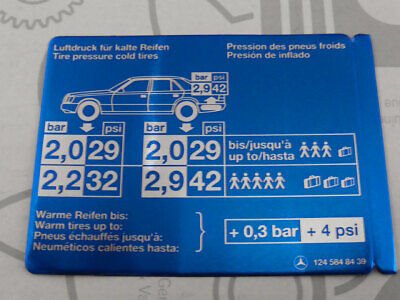Scouser51
Member
Hi Everyone,
I own a 2018 E Class 220d and am a little concerned about what pressure I should maintain my tyres at. Obviously the car is fitted with run flats, I normally only have the wife in the car and occasionally my young grandchildren.
The data on the inside of the fuel filler cap indicates 32 psi on the front and 33 psi on the rear. The rims are big at 19 inch but I’ve never known such low tyre pressures is it because they are run flats?
I own a 2018 E Class 220d and am a little concerned about what pressure I should maintain my tyres at. Obviously the car is fitted with run flats, I normally only have the wife in the car and occasionally my young grandchildren.
The data on the inside of the fuel filler cap indicates 32 psi on the front and 33 psi on the rear. The rims are big at 19 inch but I’ve never known such low tyre pressures is it because they are run flats?

